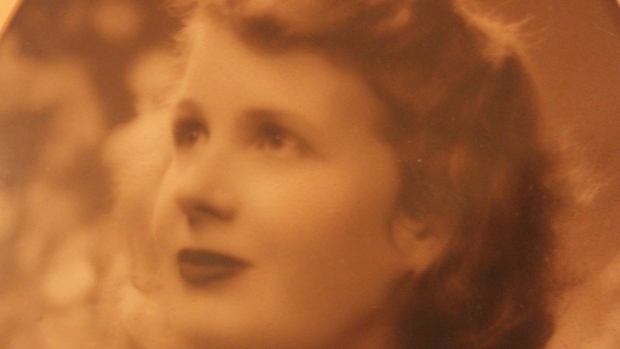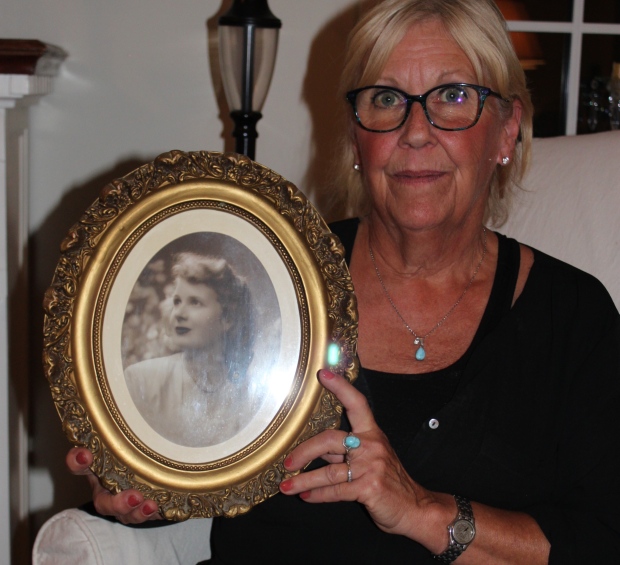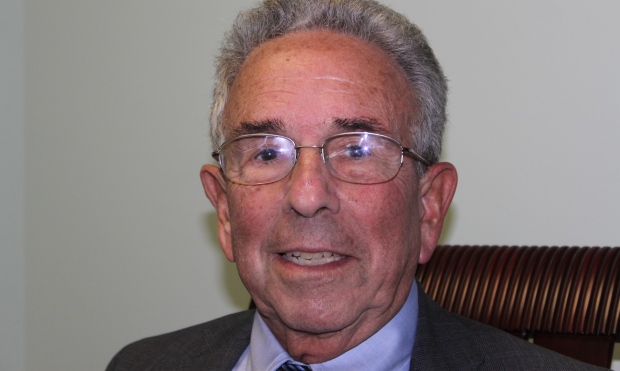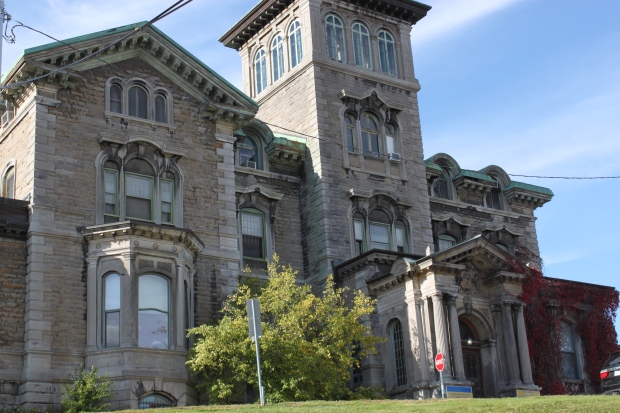In 1957, Jean Steel was admitted to Montreal’s Allan Memorial Institute. The once happy and energetic 33-year-old was diagnosed with manic depression and delusional thinking.
In the months that followed, Steel became the victim of CIA-funded brainwashing experiments conducted by Dr. Ewen Cameron. She was kept in a chemically induced sleep for weeks and subjected to rounds of electroshocks, experimental drugs and tape-recorded messages played non-stop.
Steel said her mother was never quite the same.
“She was never able to really function as a healthy human being because of what they did to her.”
Now, 60 years after Cameron’s experiments left her mother damaged for life, Alison Steel has finally won a measure of justice for her family.
CBC News has learned that the federal government quietly reached an out-of-court settlement with Steel earlier this year, paying her $100,000 in exchange for dropping the legal action she launched in September 2015.
While a non-disclosure agreement prohibits Steel from talking about the settlement itself, the existence of the settlement and the amount was included in the most recent public accounts tabled by the government earlier this month.
Montreal lawyer Alan Stein, who negotiated the deal, said the government’s decision to compensate Steel could provide hope for the families of other patients who were subjects of Cameron’s “de-patterning” experiments but were initially denied compensation.
“They still have a possibility if their medical reports clearly establishes that they were substantially de-patterned.”
Although the official compensation program closed more than 20 years ago, Stein said the federal government has quietly settled claims from a handful of patients in recent years. He said Steel’s settlement is the second case of the government compensating the estate of a former patient.
LSD and the CIA
The settlement with Steel is the latest development in the decades-old saga that began with Cameron’s experiments at the Allan Memorial Institute in the ’50s and ’60s.
Cameron believed a combination of chemically induced sleep for weeks at a time, massive electroshock treatments, experimental hallucinogenic drugs like LSD and techniques such as “psychic driving” through the repeated playing of taped messages could “de-pattern” the mind, breaking up the brain pathways and wiping out symptoms of mental illnesses such as schizophrenia. Doctors could then “re-pattern” patients.
However, the de-patterning also wiped out much the patient’s memory and left them in a childlike state. In some cases, grown adults forgot basic skills such as how to use the bathroom, how to dress themselves or how to tie their shoes.
The experiments were funded in part by grants from the federal government’s Health and Welfare Department, although a 1986 report by lawyer George Cooper found that government officials were not aware of the full extent of Cameron’s experiments.
What patients and their families didn’t know was that Cameron’s experiments were also being funded by the U.S. Central Intelligence Agency’s MK Ultra program.
The CIA, concerned about the brainwashing of U.S. soldiers who had been Korean prisoners of war, funded mind-control experiments across North America.
In 1992, Conservative Justice Minister Kim Campbell decided to compensate dozens of Cameron’s former patients. Without admitting legal liability, Campbell said the government would make the $100,000 payments for “compassionate and humanitarian reasons.”
An estimated 70 patients were compensated, but hundreds more who applied were rejected because the government said they hadn’t been “de-patterned” enough to warrant compensation.
Steel’s father applied for compensation on his wife’s behalf but was rejected.
Story featured in CBC documentary
It was only in 2014, when CBC Television re-aired a Fifth Estate documentary about Cameron’s experiments, that Alison Steel was inspired to give it another try.
She consulted Stein, who had successfully won compensation for former patient Gail Kastner in 2004 and an out-of-court settlement for former patient Janine Huard in 2007, and filed an Access to Information request to get her mother’s entire medical file.
“I just wanted to prove that this was done and justice was served for my mother,” said Steel.
Steel’s photos of her mother before she was admitted to the Allan Memorial show a happy, active person, skiing, horseback riding, laughing with her friends. Her letters are those of a normal, healthy person.
But Steel said her parents had lost a first child who was born with spina bifida. Her mother appeared to have suffered from postpartum depression after Steel’s own birth a couple years later.
“She was showing signs of depression and not able to cope,” Steel said. “And having a young infant — me, at the time, one or two years old — it was getting difficult, so they were worried.”
Steel said her grandparents, who lived in the Montreal suburb of Westmount, heard about Cameron’s reputation and thought he offered the solution.
Pages upon pages of medical records document what happened next.
‘Confused… but much more co-operative’
According to a report written by Cameron, Steel was kept in a chemically induced sleep for weeks. One series lasted 29 days. A second lasted 18 days. The sleep therapy was accompanied by a series of electroshocks.
“She was extremely confused and disoriented but much more co-operative,” Cameron wrote in his report.
Nurses’ notes on her charts detail repeated doses of sodium amytal, and how Steel would pace the hall and rail about feeling like a prisoner:
“‘It’s just like being buried alive. Somebody please do something.’ This was all said screaming at the nurse and doctor,” one note said.
Steel said at one point her mother was so upset at the prospect of going back for followup treatments that she tried to jump out of her husband’s car in downtown Montreal.
Steel began to realize when she was a teenager that her mother wasn’t quite the same as other mothers.
“When you wanted to talk with her about something emotional … she just could not do it,” Steel said. “Her emotions were stripped. It took away her soul.”
Her mother would sit alone in the dark, writing codes and numbers on the walls.
“One time I came home and the ceiling was spray-painted with red swirls all over it,” Steel said. “She would take wallpaper and cut out little sections of it and she would pin it to the whole room.”
With the out-of-court settlement Steel has some measure of justice, but she thinks of the families of other patients who have never received compensation.
“I feel that it’s important to bring out the story, to tell others that this is what happened.”
By Elizabeth Thompson, CBC News
Source Article from http://feedproxy.google.com/~r/HumansAreFree/~3/NUOmdfR6oSI/canadian-government-quietly-compensates.html
 RSS Feed
RSS Feed















 November 8th, 2017
November 8th, 2017  Awake Goy
Awake Goy 




 Posted in
Posted in  Tags:
Tags: 













